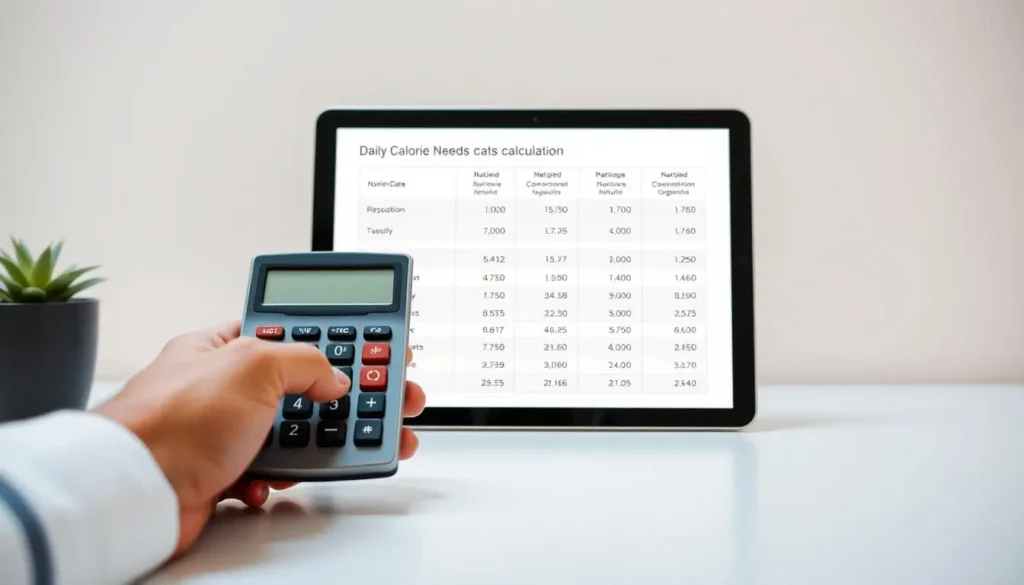Simple Macro Counting: 5 Easy Steps to Get Started
Do you need to gain control of what you eat and reach your health ambitions? Macro counting may prove to be a game-changer. Studies indicate that it can aid weight loss, enhance the quality of the diet, and assist you in attaining some health-related objectives.
In macro counting, you keep a record of the protein intake, the carbs, and the fats in the diet. This process can be simplified by following a guide to macro counting as a beginner. There are 5 simple steps on our way to simple macro counting.
Table of Contents
Key Takeaways
- Learn the fundamentals of macro counting and why it is beneficial
- Find out how to monitor your macros efficiently
- Find out how the 5 easy steps help you start simple macro counting
- Make your diet better and live the way you desire
- Our newcomer’s guide to macro counting will make it easy
What is plain macro accounting, and why should I notice?
The first step to begin with simple macro counting is to be aware of macronutrients. They include proteins, carbohydrates, and fats. These are the key nutrients that your body requires.
Types of Macro nutrients: Protein, Carbs, and Fats Understanding
You need macronutrients for the functioning of your body. They energize you and assist in development.
The Use of Each Macronutrient in Your Body
Proteins supplement tissue repair and tissue building. Your brain gains energy in the form of carbohydrates. Fats assist in the absorption of energy and vitamins.
Dense common food macro foods
Macronutrients differ in different foods. For example, chicken contains a high amount of protein, while pasta contains carbohydrates. Knowledge of this enables you to make better food choices.
Rewards of Monitoring Your Macros
Monitoring your macros will help raise your performance and weight.
Diet and Body Composition
However, you can maintain a healthy weight by monitoring your macros. You are supplied with the right nutrients for your body.
Energy and performance optimization
Tracking on a macro level improves your energy and performance. It assists you in performing better in day-to-day activities and sports. You absorb the nutrients that you require to remain healthy.
Step 1: Calculate your daily calorie needs
One important step in counting macros is determining the daily number of calories you should eat every day. It assists you in determining the number of calories that your body requires to work efficiently. This matters when it comes to achieving your fitness and health objectives.
What is Your BMR (Basal Metabolic Rate)?
Basal metabolic rate (BMR) is the number of calories your body requires to sustain basic functions. This involves the exchange of air, blood, and the production of new cells. It forms a large proportion of your macro computation.
Using the Harris-Benedict Formula
The Harris-Benedict formula is a common way to find your BMR. For men, it’s BMR = 66 + (6.2 * weight in lbs) + (12.7 * height in inches) – (6.8 * age in years). For women, it’s BMR = 655 + (4.35 * weight in lbs) + (4.7 * height in inches) – (4.7 * age in years). This formula gives a good idea of your resting calorie needs.
Gravitating to Your BMR: Things that Influence Your BMR
Your BMR can easily change with many things. These consist of your age, sex, weight, and height. The heavier you are or the taller you are, the more calories you require. With age, the BMR decreases. Being aware of this will enable you to meet your daily calorie requirements.
Controlling the Level of Activity
To have a better picture of how many calories your body requires each day, you will have to multiply your BMR by your activity level. This implies the application of activity multipliers so as to consider calories expended in exercise.
Multipliers of Activity explained
The activity multipliers are figures that, when you multiply them by your BMR, you get the total number that you use as energy per day. Let us say you are not very active, and your multiplier can be 1.2. A sports person may employ a multiplier of 1.9 and above.
Setting Calorie Goals According to Your Goals
Once you have calculated the amount of calories that you should consume per day, adjust your health and fitness objectives. No matter what kind of result you wish to achieve (lose weight/gain muscle/maintain weight), the crucial step to succeed in your simplified counting of macronutrients is to determine the correct calorie target in your macro-balance.
Step 2: Find Your Dream Macronutrient Angle
The first thing is to know how many calories you require each day. Then you will get your optimal macronutrient ratio. This plays a major role in a rapid macro count guide. It demonstrates how you can divide your calories into protein, carbs, and fats.
Peripheral Macro Ratios of various objectives
The ratios of needed macronutrients are altered with goals. As an example, the objectives of fat loss are not the same as those of weight gain or keeping muscles in shape.
Macro ratios of fat loss
To lose fat, increase protein intake in order to maintain muscle. Fats have to be low and carbs moderate as an energy source. Its good ratio is a combination of 40 percent protein, 30 percent carbs, and 30 percent fat.
Macro Ratios of Muscle Building
You should have an increased amount of carbs in order to train and recover a muscle. In addition, consume high amounts of protein. The healthy combination is 30 percent protein, 50 percent carbohydrates, and 20 percent fat.
Maintenance ratios, General health ratios
Aim for a balanced diet in order to maintain weight. Follow a diet of 25 per cent protein, 45 per cent carbs, and 30 per cent fat. This is health and muscle food.

Individualizing Your Macro Breakdown
Although common ratios are a good beginning, be selective about your macro split. This increases the effectiveness of your diet.
Taking care of Your Body Type and Metabolism
Your metabolism and your body type influence the way you would react to macros. An example would be accelerated metabolism, which may require more carbs.
Dietary Preference Adjustment
Engagement preferences are also important, such as vegan or keto. As an example, a keto diet consists of high fat and moderate protein, and low carbs.
You can change the proportion of your macros by using macro counting strategies and considering the following factors. This renders your fast macro counting guide effective.
Step 3: Express Your Macros in Grams
To start with, identify how many calories you should consume daily and what composition of macronutrients is appropriate. After that, calculate these figures in grams. This is the most important step since it will help to make your macro plan a reality in the day-to-day meals.
Math Behind Calculations of Macro
It is necessary to know the number of calories contained in every macronutrient. Protein and carbs contain 4 calories per gram. Fat contains 9 calories a gram. This information assists you in determining the adequate amount of each you require in grams daily.
Calculation of protein and Carbohydrate
Multiply the percentage of protein by the number of calories you consume in a day to figure out how many grams of protein you require every day. Next, separate by 4. An example is that on a 2,000-calorie diet having 25 percent of protein content, you obtain 125 grams of protein. This is the case with carbs as well.
Fat Calculations
In the case of fat, the calculations are similar except that you divide the result by 9 since fat contains more calories. Thus, at a diet containing 2,000 calories and a fat content of 30 percent, you end up with roughly 66.7 grams of fat.
Simple Macro Counting with Online Calculators
When you do not like solving mathematics, you can find calculators of macros on the Internet. It is on these tools that you can input your caloric requirements and macro proportions. They then calculate the number of grams that you should target to get daily.
Macro Calculator Recommendations
A macro calculator can be found on numerous websites and applications for nutrition to fitness. The apps usually possess additional functions such as meal tracking and planning. They facilitate your macro planning.
Your Results Answering Your Resultsonclau
Once your macronutrients have been determined, begin meal planning. These are only targets to be remembered. Your intake can vary with each day. However, pursuing these targets can assist you in achieving your nutrition targets.

Step 4: Map out and monitor your day-to-day inputs
With a plan of what food you want to eat each day, it is easy to track macros. You should also monitor the foods you take to achieve your diet objectives. Use tools and the right foods, and make macro tracking easy every day.
Coping with Macro-Friendly Foods
The most important thing is the selection of foods high in proteins, carbs, and fats. This assists in effective macro counting.
Food sources of protein
Consume lean meat such as chicken and turkey, fish such as salmon, and eggs. Add to it plant-based items like legumes and tofu as well.
Good Carbohydrate Sources
Choose whole grains, such as quinoa and brown rice. Introduce fruits and different types of vegetables into your food.
Good Fat Sources
Macro Tracking Best Apps and Tools
Easy tracking: track via the application, such as the MyFitnessPal and Lose It! apps. They make you keep track of what you are eating in a day.
On-the-Go Tracking Mobile Apps
MyFitnessPal can be used to monitor macros everywhere. It is also very helpful in being able to keep track of your diet.
Measurement Tip and Food Scales
Using a digital scale is important to measure the portion size of food. This assists in satisfying your macro needs.
Making a Sustainable Meal Plan
Macro counting requires a good meal plan. To avoid time lag and to remain on schedule, implement meal prep patterns.
Strategies to Prepare Meals
Cook in advance so as not to make unhealthy decisions. Cook and prepare meals ahead of time to portion meals throughout the week.
Cooperation with Social Situations and Eating Out
Prepare and plan for the event of eating out or at a social event. Review menus and order macro-friendly foods.
With the help of the steps and the assistance of the correct tools, straightforward counting of macronutrients is a lifestyle trend that one could maintain.
Step 5: Adaptation and Increment of Your Method
In order to take full advantage of macro counting, it is important to track your progress and make the necessary changes along the way. This is one of the major steps to keep up with your health and fitness objectives.
Checking Your Progress
It is not enough to weigh yourself, keep track of your progress, including being aware of how your body reacts to the changes you are implementing. There are a number of ways through which this could be done.
Outside the Scale: Measuring Body Composition
A more detailed indication of your progress can be achieved by using some tools, such as body fat calipers or smart scales, that will help you to measure changes in your body composition.
Instead of keeping a Food and Energy Journal
Keeping a daily record of food consumption and energy levels will help you detect the trends and areas of improvement. It eases the process of making adjustments to your macro plan when required.
Adjusting Your Macros (Where and How)
As you accumulate information on your progressions, you will likely be required to make changes in your macro ratios, so they may be more in line with your objectives. This may require an adjustment in your protein intake, the amount of carbs, or even fat intake.
Adjustments to Your Calculations: When and How
In case you realize that you are not attaining the results that you want, you must recompute your macro calculations. That may include re-entering your daily caloric requirements or changing your macro split.
Blowing Up Plateaus Macro Cycling
One conceivable approach to overcoming a plateau may involve macro cycling or modification of your macro intake throughout the course of time. It assists you in taking further steps in meeting your objectives.
Follow-up tracking of progress and slight knowledge-based adjustments to the macro planning will help you maximize the chances of success in macro counting. Not only does this increase your likelihood of success concerning your goals, but it will also make food and your body less of an enemy.
Conclusion: How to Evolve into an Easy Macro Counting Habit
At this point, you have the idea of how to start simple macro counting, time to practice it. You have been taught how to calculate your daily calorie requirement and the proportion of the macros. You are also able to calculate macro to grams and follow food intake.
It is necessary to remind you of following your macro counting advice and tracking a beginner’s guide. You will be able to monitor your macros with time. This will assist you in making a better decision relative to the kind of diet and lifestyle you will have.
These steps are not complicated, and you can adhere to a healthy diet and achieve weight loss goals. Remain determined, and you are halfway to a healthier and balanced you.
FAQ
What are macronutrients, and why do they matter?
The macronutrients provide us with energy and make our bodies develop and remain healthy. They are proteins, carbs, and fats. Our bodies greatly depend on these nutrients to work properly.
What is my daily calorie requirement?
The first is to determine your basal metabolic rate (BMR). After that, calibrate it with your level of activity. You can begin either with online BMR calculators or a formula.
What is the best macronutrient ratio for weight loss?
The acceptable ratio in weight loss is based on the type of body and your preference for foods. The easy blend is 25-30 percent protein, 40-50 percent carbs, and 25-30 percent fat. However, you may have to adjust it to suit your requirements.
How can I monitor my macros?
Make a food journal or an app such as MyFitnessPal or Lose It!. These devices assist you in tracking what you consume and monitoring your macros.
So, what are some macro-friendly foods?
One thing that is good for macros is foods that are rich in protein, complex carbs, and healthy fats. Image lean meat, fish, eggs, whole grains, fruit, and vegetables.
What is the frequency of adjustment of my macros?
Change your macros accordingly. In case you feel not getting the outcome you desire, you may have to alter your ratio or calorie consumption.
Is it possible to engage in muscle building using macro counting?
Yes, macro counting is effective when building muscle. You should increase your intake of calories as well as protein in sufficient amounts to assist your musculature in developing.
Can macro counting help vegetarians or vegans?
Indeed, macro counting can be used by vegetarians and vegans. Simply take adequate protein from plants such as lentils, beans, and tofu.
What is the best way of simplifying macro counting?
Make macro counting simple with web-based and tracking tools, and meal planning. It is also easier to keep track when you feed on whole, nutrient-rich foods.

